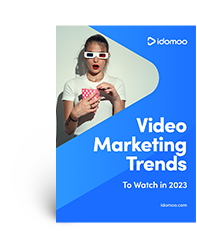It’s no secret content is king. But now that the secret’s out, it seems every and any brand is pushing their own content — and it’s too much for customers to keep up with.
To compensate for the content fatigue consumers have come down with, their attention spans have become shorter and their standards higher. Users scroll through TikToks, tweets and more that don’t immediately capture their attention, only pausing for what they believe to be the best of the best.
It’s not just customers that are adapting, though. Businesses have devised their own strategy to deal with the influx of content. They’ve begun to come up with new, innovative ways to create content that stands out.
What are the strategies they’re using? What trends have taken hold? We’ll show you the best business strategies that brands are leveraging to beat content fatigue and how you can use them to liven up your own content marketing efforts.
Why Content Fatigue Is a Problem
Content creation has exploded. It’s easier than ever to write your own thought leadership piece and share it on LinkedIn. Filming and launching a video that gains hundreds of millions of views is possible with an iPhone and a healthy Wi-Fi signal.
Better still, content captures attention. Over 90% of marketers agree content marketing has been effective for their business.
But while so many businesses leverage content marketing, our newsfeeds, search engine results and more have become cluttered. Customers see up to 10,000 ads a day, for instance.
It’s only natural, then, that customers are tired. Some describe it as content fatigue. Others are calling it screen fatigue or content shock. Regardless, they all describe the same feeling: the digital world has become too noisy.
But the solution for businesses is not to stop producing content. It’s to start producing smarter content. Here are the innovative ways marketers are doing just that.
Tapping Into the Power of Visuals
The power of visuals can’t be overstated. Images catch our attention in an instant. They help us understand — and retain — information. A picture is worth a thousand words — and marketers are using this to their advantage.
In fact, studies show that 80% of people will watch a video, while only 20% will read text. And with so much content competing for your customer’s attention, leveraging a medium they’re more likely to pay attention to is crucial.
Take a look at how brands are using visuals to take their content to the next level.
GIFs Pack a Punch
GIF marketing leverages the power of engaging visuals, while catering to our increasingly short attention span. Better still, GIFs are much more engaging than static images. It’s in our nature to immediately pay attention to anything that’s moving.
Brands have found a number of ways to use these to stand out. For instance, a GIF can be a thumbnail for a video embedded into an email, providing an engaging preview that encourages customers to click to play — perfect for optimising your email campaign.
GIFs can also make your social media campaign more engaging. Check out this drool-worthy GIF from Ihop as an example.
RT to RSVP #GIFparty pic.twitter.com/Qyetd3DXoL
— IHOP (@IHOP) March 3, 2016
When a user scrolls through their newsfeed, a GIF like this will immediately capture their attention, helping to cut through the clutter of their newsfeed.
Emojis Are 🔥
Emojis have been around since the late ‘90s, but they became especially popular after their addition to Apple’s iMessage feature in 2008.
What makes them so popular? They’re a clever and easy way to liven up your copy. Brands have found them especially useful for increasing engagement. One study showed that a tweet featuring an emoji had a 25% higher engagement rate than a tweet without.
Emojis can be used with almost any type of content. They can be added to tweets, incorporated into a video and used on a landing page.
One of the most common use cases are email subject lines, which can help resolve a common pain point for email campaigns — engagement rates. For instance, including a champagne glass or Christmas tree during the holiday season can make your subject line stand out in your customer’s crowded inbox.
Short-Form Videos
As we touched on before, customers have adapted to content fatigue with an increasingly shorter attention span.
While videos are incredibly engaging, today’s users don’t always have the patience to sit through 5- or 10-minute videos. But you can say a lot in just a few minutes, even a few seconds, when you have an immersive medium like video.
Take a look at the 24-second video below and see if it doesn’t draw you in.
If you need proof of this trend, consider the wave of short-form videos across social media. TikTok was the most downloaded app in 2021. Instagram followed shortly after with the introduction of Instagram Reels. And other social platforms have also taken hold of the trend, including YouTube and Facebook.
And it’s not just social platforms that are doing this. Businesses everywhere are using this trend to get their products and services in front of a wider audience. For instance, Ocean Breeze saw a staggering increase in brand reach thanks to a viral TikTok featuring the brand’s beverage.
The CEO reported they’ve amassed over 15 million brand impressions, all from a short-form video users can’t get enough of.
Leverage Storytelling
Content is all about telling a story. Most brands, though, find their content falls flat because the stories they tell revolve around sales.
There are so many stories you can tell with your brand that go beyond the traditional sales pitch. Swap a flashy discount for something that will actually stick with your audience.
This commercial from Extra Gum is a great example. If you haven’t seen it yet, find a box of tissues now. It’s a tear-jerker.
Rather than focus on their gum’s long-lasting flavor or any other claim you’d typically expect from a commercial, Extra Gum was able to stand out by creating a story full of emotions viewers can resonate with. It’s an ad customers will actually want to watch — rather than choose to skip.
Add Personalisation
There’s a reason why over 70% of consumers become frustrated when brands don’t offer personalised communications. With so much content to pick from, personalisation makes it easier to find what will actually speak to our wants and needs.
If you’re scrolling through Netflix, for instance, a personalised selection of shows based on what you’ve watched in the past can help you quickly find something you’re likely to enjoy.
An increasingly popular form of personalised content across industries is recap videos highlighting every viewer’s personal achievements. Orangetheory Fitness exceeded their expectations for their marketing campaign to reduce member attrition with this personalised year in review.
By leveraging customer powerful data, Orangetheory Fitness was able to deliver a video giving every viewer insight into their personal fitness journey and all they had achieved with the brand.
And members loved it. The video they received told not just any story — but their story, interesting them immediately. The campaign helped lead to a record-breaking 97% attendance rate and 45,000 additional classes booked.
Beat Content Fatigue
You now know some of the best business strategies to combat content fatigue. Leverage storytelling to keep people engaged. Craft a message that’s relevant to them. Put it in a video, a format people can’t get enough of. Leverage storytelling.
As innovators in the world of video, we’ve seen our clients stand out with video content that goes above and beyond what customers expect. Videos can now be interactive, contextual and even customised straight from the player. If your content needs a boost, it’s the perfect place to start.
Ready to rise above the digital noise? Let’s connect.






